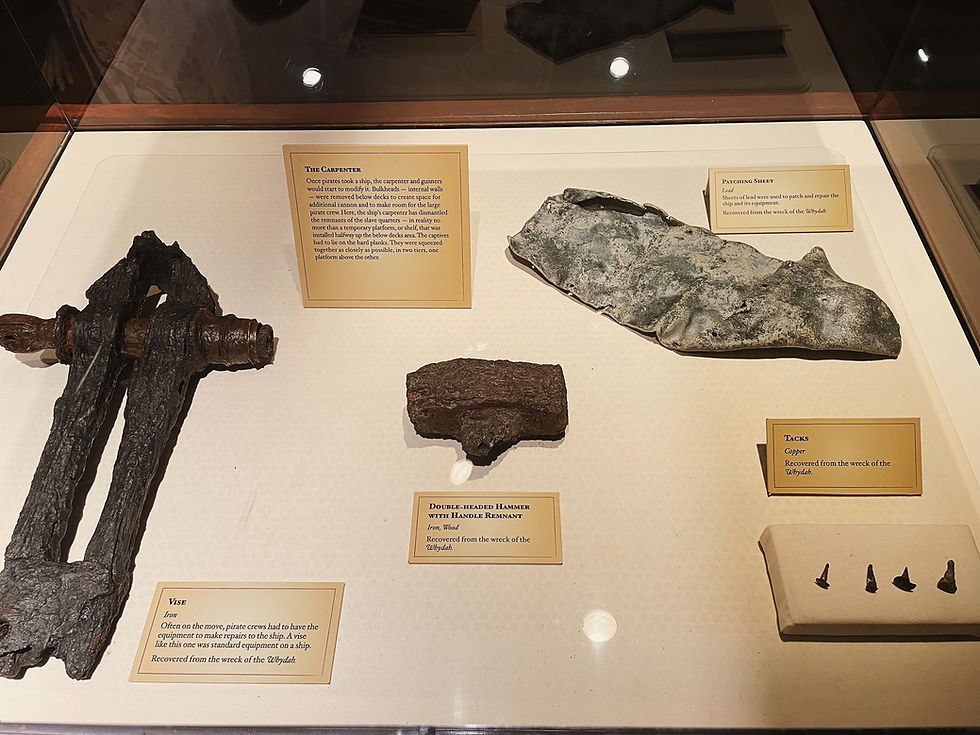The Secret Joint Hinge
- marcsitkin
- Jul 9, 2020
- 3 min read
Updated: May 15, 2023

Sketch revealing the secret of the secret-joint hinge.
From The Chronicle, Volume 3, No. 1, July 1944
By Rudolf Hommel
A close study of old houses in eastern Pennsylvania revealed that up to the period of the Revolutionary War door hinges were made of wrought iron. For inner and lighter doors we find the so-called H and L hinges, and for heavier and outer doors the strap hinges, which swung upon a hook driven into the door post.
Immediately after the Revolution, from 1783 on, there appeared suddenly the so-called butt hinges made of cast iron. By comparison they were small, folding together like a book. Screwed to the aBUTTing edges of door and casing they were hidden from view, only the rounded joint of the two leaves showing when the door was closed. Quite a number of these cast iron butt hinges bear the inscription BALDWIN PATENT.
One may wonder what is patentable in a hinge which was well known for centuries made of wrought iron, brass or copper, but now made of cast iron. Some search has so far failed to find an American patent for a hinge assigned to a person with the name of Baldwin. If it should ever be found the description, no doubt, would disclose what the inventor claimed as new in his invention.
We did, however, find notice of an English patent for cast iron hinges. It is the British patent No. 1102, of October 3, 1775, assigned to Messrs. Izon and Whitehurst at Birmingham. The patentees called it an invention for making cast iron hinges with the secret joint. We have never seen a cast iron hinge which could be identified as made by Izon and Whitehurst. So we kept on wondering and searching for an explanation of the secret of the secret joint. Finally we ran across a book entitled "Birmingham and Midland Hardware District" edited by Sam. Timmins (London 1866). On page 103 we found mention of Izon and Whitehurst's patent of 1775 and an attempt to solve the mystery of the secret joint. "It will be well to explain," the text has it, "that this invention for casting hinges was for joining the two halves or flaps of the hinge in the casting instead of casting them separately, and fitting them together afterwards. The wire running through the two halves of the joint is surrounded by the cast metal and is entirely hidden, hence the name secret hinges."
Having gained this information, we scrutinized our Baldwin Patent hinges and found that neither on top nor on the bottom of the joint is there any hole where a pin could have been inserted around which the two leaves of the hinge would revolve. The evidence seemed now conclusive that our cast iron hinges, marked Baldwin Patent must be the type which were patented by Izon and Whitehurst in 1775. It could well be that one Baldwin marketed here in the States, legally or otherwise, the cast iron hinges with the secret joint, under his name, and that the word Patent referred to the original English patent.
Now we should have been satisfied that we finally understood the secret joint of the cast iron hinge, patented in England in 1775, used extensively in the budding United States as the Baldwin Patent, and finally explained in the Birmingham account of 1866. Whether we accept this explanation or not, there is no doubt that it was a first rate hinge and has lasted for many generations in our parts.
We have a Baldwin Patent hinge on a cupboard door and it has served faithfully now for a century and a half and for the same length of time has guarded its secret. And one day it broke down. There was no pin or wire at all embedded in the metal. The two leaves of the hinge were held together in quite a different way which fully justified it having been patented.
The accompanying sketch reveals that the cylindrical knuckles which revolve one on the other have a domed projection which fits into a cup-shaped recess of the adjoining piece. The process of manufacture, no doubt, was first to cast one leaf of the hinge, and then take this finished piece and place it in the mold for the companion piece and pour the hot metal so that the second piece became locked to the first one. The rapid chilling of cast iron poured into a mold and up against a cold piece of cast iron embedded therein, of course prevented the hot metal from fusing to the cold one.
Of further interest is the observation that here in this hinge with the secret joint, we find the nucleus of the idea of the joint in the "zipper." Of course, in the cast iron hinge the joints are solidified, as it were, but, after all, who wants to "unzip" a hinge.




Comments